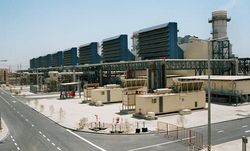
OR WAIT null SECS
© 2024 MJH Life Sciences™ and Turbomachinery Magazine. All rights reserved.
How steam conditions determine turbine power output
In addition to component design, steam turbine reliability is dependent on many systems that can affect its safety, and therefore calls for effective monitoring of steam, condensing, governor, protection, trip valve exerciser, steam seal, cooling and monitoring systems. Defining the steam conditions accurately ensures maximum power output and reliability. Failure to do so has often led to low turbine power output and erosion of the last stages of blading in condensing turbines.
Lower than specified pressure and temperature differential conditions during field operation will limit produced power and affect plant revenue. For condensing turbines, the condenser conditions have to be maintained properly to prevent power reduction or exhaust end blade erosion, especially in high vacuum conditions.
Steam conditions determine the energy available per pound of steam. The steam conditions are the pressure and temperature conditions at the turbine inlet and exhaust flanges. They define the energy per unit weight of vapor that is converted from potential energy to kinetic energy.
While low steam energy conditions in the field reduce power output high vacuum conditions increase the moisture in the exhaust steam. Moisture content in excess of 12 percent will result in reduced exhaust end blading life in rotor and diaphragm blading assemblies. But often, proper attention is not paid to maintaining correct steam conditions at the flanges of a steam turbine, which can cause mechanical damage to turbine internals resulting from blade erosion and corrosion.
The actual steam rate is based on the actual turbine efficiency. But if the turbine efficiency is not known, and the turbine inlet and exhaust conditions are given, the actual steam rate can easily be calculated. It is easy to determine the efficiency of any operating turbine if the exhaust conditions are super-heated. But for turbines with saturated exhaust conditions, the results are not always accurate. Determining the power required by the driven equipment or record turbine power will give the power produced by the turbine.



